Pets in the Potala: Domestic Animals of the Dalai Lamas
The Fascinating Relationship Between the Dalai Lamas and Their Animal Companions
For centuries, the Dalai Lamas of Tibet have lived in Potala, a massive palace complex in Lhasa, Tibet's capital. But do you realize these spiritual gurus also have a special connection with the animal kingdom?
Throughout history, various Dalai Lamas have developed close relationships with pets in their homes. For decades, the sounds of barking and meowing reverberated throughout the home of the Dalai Lamas, the Potala Palace, Lhasa's monastery-like complex. Other animals kept there were birds, rabbits, horses, and hawks. The historical narratives we'll be sharing soon offer an intriguing glimpse into their interactions with animals, revealing their human side.
The attitude towards animals in Tibet
One significant aspect of Tibetan Buddhist teachings relevant to animal welfare is the concept of "ahimsa," or non-violence. This principle extends to all sentient beings
 |
| The snow-capped landscape of Tibet is home to several interesting animals, many of which also serve as domestic pets |
Such emphasis on compassion and non-harming has influenced attitudes towards animals in Tibetan society, including practices related to their welfare. Moreover, The Dalai Lama, particularly Tenzin Gyatso, the current 14th Dalai Lama, has publicly advocated for animal welfare on numerous occasions.
Dalai Lamas and Their Domestic Pets
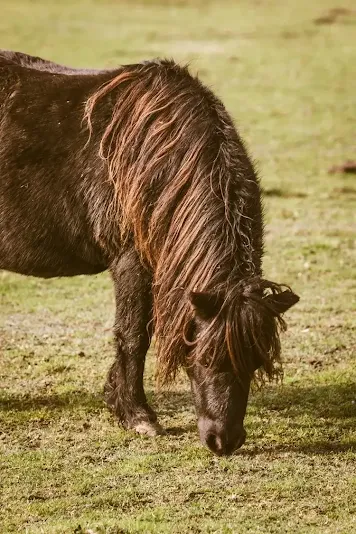 |
| Tibet is home to several horse breeds adapted to the Tibetan environment, such as the Riwoche horse |
Another horse breed in Tibet is the Riwoche Horse, indigenous to the Riwoche Valley in eastern Tibet. These horses are larger and stronger than the Tibetan Pony, with a thick mane and tail and a solid build. Riwoche horses have long been utilized for transportation, agriculture, and as cavalry horses in the Tibetan military.
Dogs and Cats in the Halls of Potala:
Another typical sight in the Potala Palace was dogs. Dogs' lively personalities brought humor to the seriousness of religious devotion. In addition, the Dalai Lamas owned dogs as pets and often took them for walks in the palace's gardens.
trip
In Tibetan Buddhist art, dogs are frequently seen next to enlightened beings such as Bodhisattvas. For example, some paintings depict Mahakala, the powerful guardian deity, riding a dog.
In Tibetan Buddhist art, dogs are frequently seen next to enlightened beings such as Bodhisattvas. For example, some paintings depict Mahakala, the powerful guardian deity, riding a dog.
Dogs are also a part of Tibetan religious ceremonies and rituals. Dogs are offered tsampa (roasted barley flour) and other food items as a gesture of respect and gratitude during the annual Tibetan New Year celebrations known as Losar. Presence at this ritual is believed to bring blessings and prosperity to both humans and animals involved.
 |
| Dogs and cats hold a special significance in Tibetan culture and religion |
The first Dalai lama, Gendun Drub, was also known for his love of dogs, which from then on had a constant presence in Potala, serving as protectors. The 13th and 14th Dalai Lamas were particularly fond of dogs. Thubten Gyatso, widely known as the 13th Dalai Lama, kept several mastiffs as guardians at Potala Palace. Similarly, the 14th Dalai Lama, Tenzin Gyatso, formed a close bond with a small terrier named 'Tibet,' who became a symbol of hope and resilience during the Dalai Lama's dangerous escape from the country and following exile.
Tibetan dog Bree
Dogs have served as hermitages' and monasteries' guardians for years. The Tibetan Mastiff, one of the most popular dog breeds from the Himalayas, was often used for guarding monasteries because of its keen senses.
Tibetan Mastiffs are large, powerful dogs with a thick double coat that protects them from extreme weather conditions. In the past, these dogs were tasked with protecting Tibetan monasteries. Their strength, loyalty, and ability to withstand harsh mountain climates became famous.
Tibetan Mastiffs are known for their imposing presence, strong protective instincts, and deep loyalty. They tend to be wary and aloof around strangers. These dogs make good protectors because of their love and dedication to their human mates.
Despite its name, the Tibetan Spaniel is not a real spaniel but an ancient toy breed that originated in Tibet. Tibetan monks kept it as a companion dog in monasteries and used it as a messenger to deliver buddhist prayer wheels inside the monasteries. They were highly valued dogs that were often given as gifts to visiting dignitaries, thats why they also ended up in faraway places like China or Japan.
Tibetan Spaniels are small, agile dogs with a distinctive lion-like mane around their necks. Their eyes are expressive and they have a lively and intelligent demeanor. Despite their small size, they possess confidence and assertiveness, frequently acting as alert watchdogs. Affectionate and devoted to their families, they may be reserved toward strangers.
The Tibetan Terrier, also known as the "Holy Dog of Tibet," has a long history dating over 2,000 years. Bred by Tibetan monks in monasteries as companions and watchdogs and even considered lucky charms. Tibetan Terriers are medium-sized, well-balanced dogs with a distinctive long, shaggy coat that protects them from the cold climate. They are known for their friendly, outgoing nature and intelligence. Tibetan Terriers are excellent family pets, being affectionate, playful, and good with children. They are also adaptable and thrive in both city and rural environments.
The presence of dogs in Tibetan Monasteries
Originating from the ancient city of Lhasa, the Lhasa Apso is a small-sized dog kept in monasteries as a companion and watchdog. Lhasa Apsos are small, sturdy dogs with a distinct long, flowing coat that requires regular grooming. They have a confident and independent temperament. While they can be aloof with strangers, they are fiercely loyal and affectionate with their families. Lhasa Apsos make excellent watchdogs.
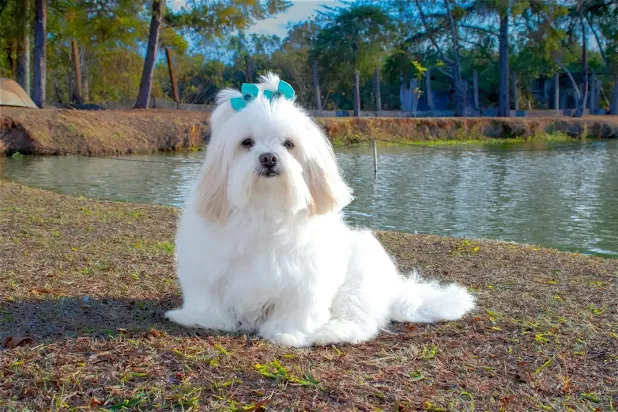 |
| For centuries, Lhasa Apsos have resided in monasteries, where they served as messengers and fulfilled various other roles |
The Tibetan Kyi Apso, or Tibetan Sheepdog, is an ancient breed that originated in the remote regions of Tibet, where it was used by nomads to protect livestock from predators like wolves and snow leopards. Tibetan Kyi Apsos are medium to large-sized dogs with a sturdy build and a dense double coat that provides insulation against the harsh climate. They are intelligent, independent, and fiercely protective of their territory, forming strong bonds with those they trust. Kyi Apsos are highly adaptable and make excellent working dogs or family companions.
Unavoidably rooted in Tibetan culture, dogs remain common in Tibetan society, with many people favoring Tibetan Mastiffs. In cities, toy breed dogs—such as pugs and French bulldogs—have also gained popularity. Animal welfare in Tibet has advanced significantly in recent years, thanks to many programs aimed at enhancing the lives of stray dogs and other animals.
The presence of cats in Tibet
The Himalayan cat is a domestic cat, not a defined breed, and it lives in the Himalayan region, including Tibet, where it has most likely coexisted with humans for generations. These cats have adapted to cold mountainous climates with their long, flowing fur that protects them from the cold. They are agile and independent, with great hunting instincts. While not recognized as a stand-alone breed, they share features with other long-haired breeds such as Persians and Siberians.
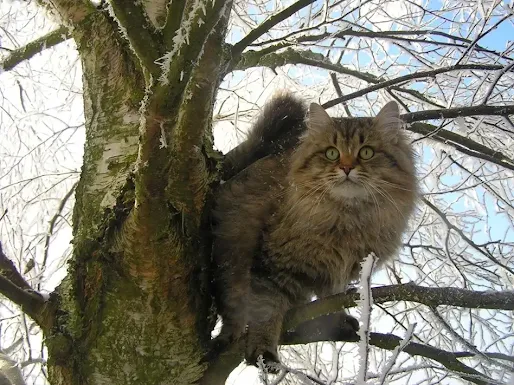 |
| Tibetan cats boast long and robust fur, providing them protection from the cold (Author:Roswitha Budde, used under CC-BY-SA 3.0 license) |
The Himalayan cat is not native to Tibet, but has roots in neighboring nations such as Persia (modern-day Iran). They inherited characteristics from both parent breeds: Persian and Siamese. Himalayans have a stunning look, with long, silky coats and vivid color markings on their ears, face, paws, and tail. They have a calm and friendly demeanor, combining the pleasant nature of the Persian with the gregarious and vocal instincts of the Siamese. Himalayans thrive in indoor enviroment and love relaxing in comfy areas.
Although not directly linked with Tibet, Siberian cats are adapted to harsh climates. They have a triple-layered coat that is dense and water-repellent.
Siberians are large and muscular, possessing a playful and affectionate nature. Often, they form strong bonds with their human families due to their intelligence and adaptability. Their hypoallergenic qualities make them suitable for people with allergies. Although there may not exist any Tibetan cat breeds, the cats mentioned above are found in Tibet and are well-suited to the Himalayan environment and lifestyle.
In Tibet, cats are a common sight, especially in rural communities, and they are generally seen as a positive sign. Although dogs are more widespread in Tibetan society, cats nevertheless hold a special place due to their characteristics. Cats are respected in Tibetan tradition for their secretive nature, which is typically associated with independence and spiritual inclinations. In Tibetan Buddhist art, cats commonly appear alongside enlightened sages. Despite their differing temperaments, dogs and cats coexisted in ancient Tibet, and no monastery or palace was complete without one.
Birds and Hawks
It is thought that the 5th Dalai Lama kept the Himalayan Bluetail for its singing ability. This small bird is native to the mountains, where its unique and beautiful singing can be heard across the forest.
 |
| Due to its remarkable singing abilities, the Himalayan bluetail is often referred to as the canary of the Himalayas |
According to Tibetan tradition, the Himalayan Bluetail can sing magically. It is thought that the song of a Himalayan Bluetail transports prayers to heaven.
One ancient tale tells of a traveler who got lost in the mountains of Tibet. The traveler was afraid that he would never find his way home as night fell and darkness enveloped the land. During his time of despair, he heard the melodious song of a Himalayan Bluetail echoing through the valleys. The traveler followed the sound until he reached safety.
The Pet Collection of Thubten Gyatso
Thubten Gyatso, the 13th Dalai Lama, was known for his deep affection for animals and had a large number of pets in the Potala Palace. His house pets included dogs, horses, and a bear named Misha. Thubten Gyatso also publicly advocated for better treatment of animals in Tibet during a time when it was far more difficult to achieve. The Dalai Lama's fondness for animals spread throughout Tibetan society beyond the Potala Palace. His animal protection initiatives elevated awareness of animal rights throughout the country, and today's Tibetan animal rights activists look to him as a role model.
The status of animals in Tibet and Advocacy for Animal Welfare:
Dalai Lamas are major champions of animal welfare in Tibetan society. They have condemned animal maltreatment and pushed for the ethical treatment of all sentient beings. Their emphasis is on compassion and nonviolence, which encompasses both humans and animals in the spirit of ahimsa (nonviolence) and karuna (compassion).
 |
| Are animals merely animals, or do they also function as friends and family members? The boundaries between these roles are often ambiguous |
Today, the 14th Dalai Lama continues to advocate for animal welfare and nature protection. In his lectures, he emphasizes the necessity of cultivating compassion for all living species and instilling a sense of responsibility for the planet's health. His advocacy and personal example have inspired millions of people all around the world to treat animals with respect and sensitivity.
Tibet's long history of animal-human connections illustrates the universality of compassion. Love has no boundaries, from the smallest rabbit to the greatest Tibetan mastiff.
We should seek to embrace the Dalai Lamas' long-standing ethos of compassion and appreciation for all life forms.


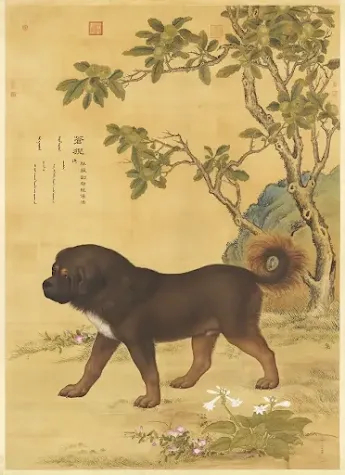
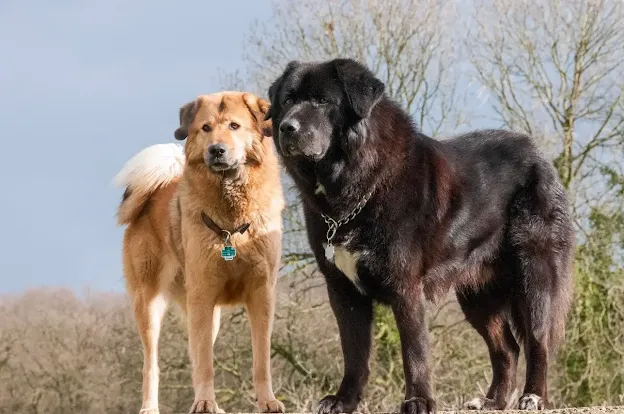





Comments
Post a Comment